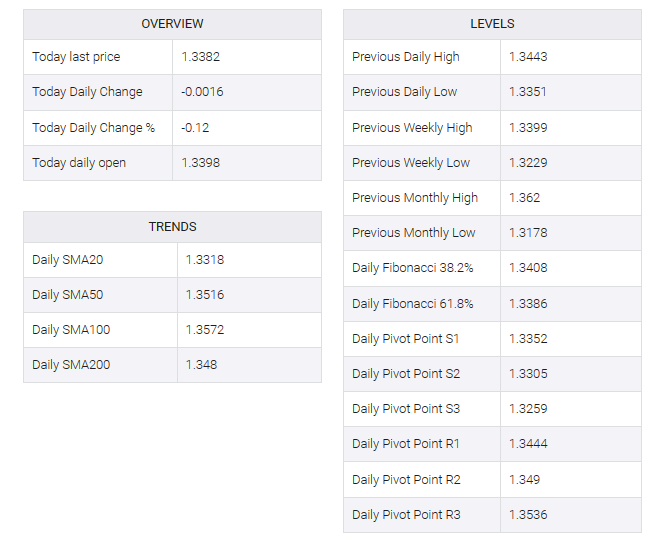-
USD/CAD retraces its recent gains as Crude prices continue to gain ground.
-
WTI price moves upward over escalated concern of Middle-East conflict.
-
US and UK military forces conducted air strikes on Iran-led Houthi targets in Yemen.
-
The risk-on mood weakens the US Dollar despite upbeat US CPI data and improved US yields.
USD/CAD gave back its recent gains registered in the previous session, falling to around 1.3380 in the Asian session on Friday. The Canadian dollar (CAD) strengthened in response to rising crude oil prices, which may be linked to increased tensions in the Middle East.
The United States (US) and United Kingdom (UK) militaries, supported by Australia, Bahrain, Canada and the Netherlands, launched airstrikes against Houthi targets in Yemen led by Iran. This action was taken in an attempt to secure maritime vessels in the Red Sea. West Texas Intermediate (WTI) prices are trading around $73.40 per barrel at the time of writing.
In the absence of economic data from Canada for the rest of the week, traders await next week’s Canada Consumer Price Index data for December and retail sales figures for November on Tuesday and Friday, respectively.
The US dollar (USD) was challenged by improved risk appetite as traders moved away from the greenback, which could be attributed to expectations of Federal Reserve (Fed) rate cuts in March and May. The US dollar index (DXY) traded slightly lower around 102.20 despite improving US Treasury yields.
On Thursday, the positive US inflation data provided support for the US Dollar, enabling it to gain some upward traction. The US Consumer Price Index (CPI) recorded a 3.4% year-on-year increase in December, surpassing both November’s 3.1% and the expected market figure of 3.2%. Additionally, the monthly CPI growth for December exhibited a 0.3% increase, surpassing the market projection of 0.2%. However, the annual Core CPI slightly eased to 3.9% from the previous reading of 4.0%, while the monthly figure remained stable at 0.3%, aligning with expectations.
Traders await the release of the US Producer Price Index (PPI) data for December, along with the speech by Federal Reserve member Neel Kashkari later in the North American session, seeking additional insights into the economic landscape of the United States.


